Look above, it's all clipped.
EDIT: This is what happens when you apply wavelets/HDR techniques to clipped areas. None of those details can be attributed as real imho. I don't know how the HDR script works technically and what kind of artifacts it can generate, but while the center is indeed over-exposed and clipped, the "spikes" show on non-clipped areas, just around the clipped part. Will HDR still generate artifacts there? 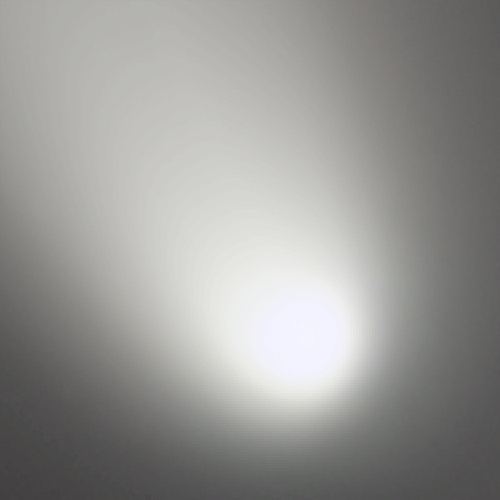 |
You cannot like this item. Reason: "ANONYMOUS".
You cannot remove your like from this item.
Editing a post is only allowed within 24 hours after creating it.
You cannot Like this post because the topic is closed.
Copy the URL below to share a direct link to this post.
This post cannot be edited using the classic forums editor.
To edit this post, please enable the "New forums experience" in your settings.
The only way to reproduce this, from my end, is to enable "median transform" within HDRMT in PI, which yield this fireworks look to the outer coma. 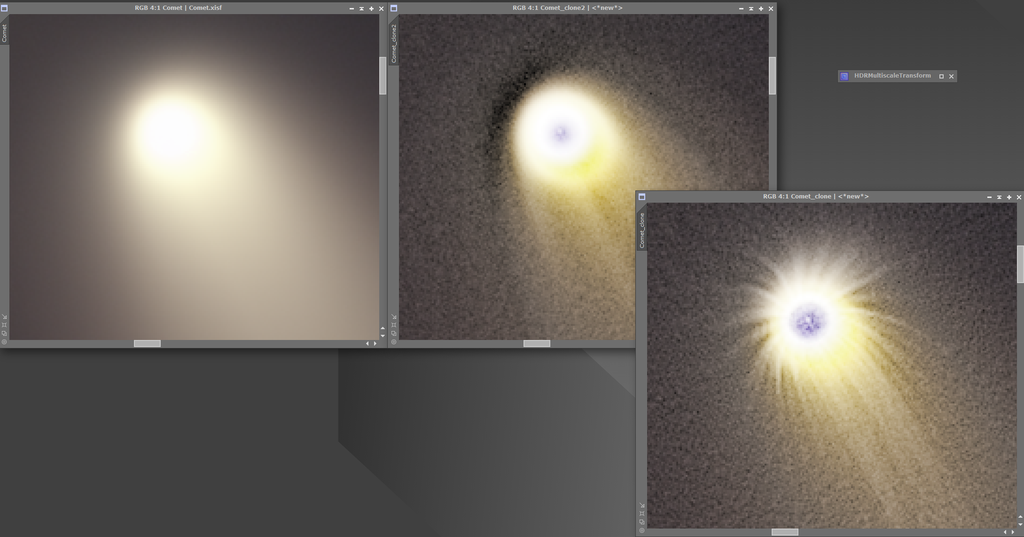 Do these median filters guarantee isotropy?
|
You cannot like this item. Reason: "ANONYMOUS".
You cannot remove your like from this item.
Editing a post is only allowed within 24 hours after creating it.
You cannot Like this post because the topic is closed.
Copy the URL below to share a direct link to this post.
This post cannot be edited using the classic forums editor.
To edit this post, please enable the "New forums experience" in your settings.
I ran a test on some of my own archived data on 12P, I'm able to produce the same streaks towards the nucleus there. To the left is my method of doing it (without median transform), to the right is a pass of HDRMT with median transform activated + a very high amount of LHE just to make them stand out more. One thing to note though, is that the lines are much closer to the nucleus in this image vs OP's image  If I apply it to my already processed image I don't get them, in stead they (of course) over-sharpen the already sharpened details of the inner coma. On the other hand, the image treated with median transform lack all the details from the wavelet treated image. Maybe there's an obvious answer to this, but how come that signal is now gone/looks different? 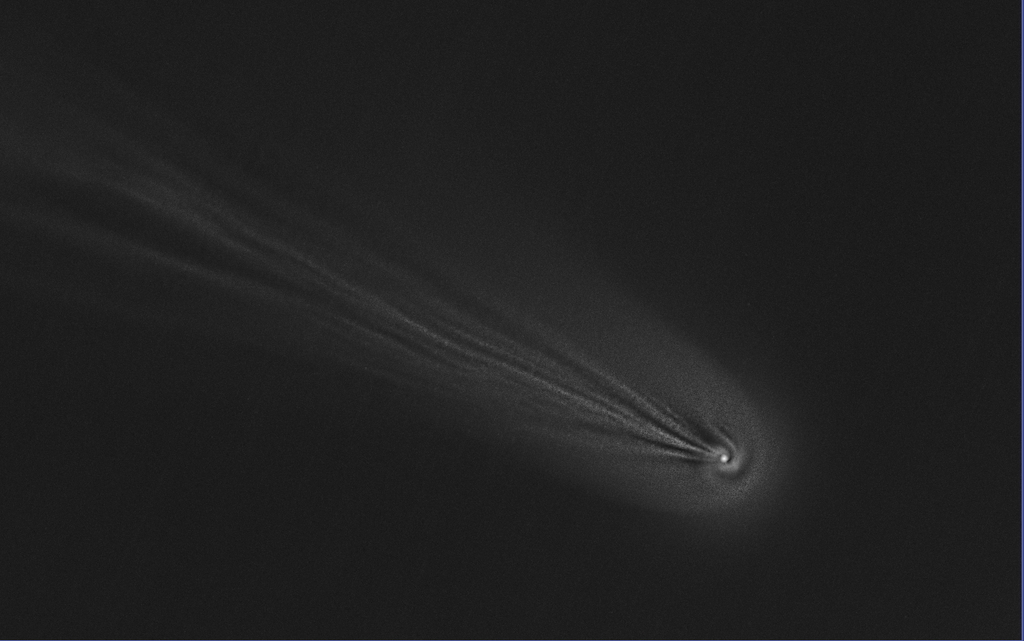 The features I pulled out with originally are also visible in the single exposures in an animation I made, and was confirmed by others as well. I'm still not quite sure about this. Something definetly pops out by applying median transform, that I haven't dabbled into before myself. As for the isotropic values I'm unable to go any further into validating whether this holds up, I'm not a scientist by any means and unfortunately it does not have any documentation that I can find. The closest I could find would be this: https://pixinsight.com/forum/index.php?threads/use-of-hdrmt-for-comet-images.18872/Fellow AB user Dan Bartlett posted about it a couple of years ago, but the PI Staff were a bit vague in their response. What I take from this is that using median transform might just reproduce structures that may not be isotropic. It seems to be more aggressive at smaller scales and behaves very differently. On the older, written tutorials PI released about mediantransform they claimed that it could produce artifacts around certain structures. For instance eroding/dilating around circular structures, thus generating artifacts when sharpening. I'm not as sure, but I remain skeptical though. I reckon the best people to answer this would be the PI developers (as there is no documentation of this tool) or one of their ambassadors like Adam Block. I know he went out on HDRMT use on comets during Neowise. Here's a walkthrough by Vincent Peris on this particular processing on Neowise: https://pixinsight.com/examples/NEOWISE/index.htmlEDIT: Added the link to the last line, somehow forgot that.
|
You cannot like this item. Reason: "ANONYMOUS".
You cannot remove your like from this item.
Editing a post is only allowed within 24 hours after creating it.
You cannot Like this post because the topic is closed.
Copy the URL below to share a direct link to this post.
This post cannot be edited using the classic forums editor.
To edit this post, please enable the "New forums experience" in your settings.
Wow, that's super interesting!
Thanks a lot for that thorough analysis and these details.
I think we get closer to an explanation since these two processing techniques on Pons-Brooks produce conflicting results.
If the core is rotating, thus producing the effects shown in your first image, then why aren't the spikes also showing rotation?
The post on PixInsight's forums is also very interesting, and I'm happy to see someone else with these weird spikes.
Thanks for finding this one.
It's also a bit confusing to my understanding, but just like you, I'm neither a scientist nor knowledgeable about image manipulation algorithms.
They say the Median Transform could theoretically produce artifacts, but the implementation in PixInsight should not.
Indeed, it would be great to have more insights from PixInsight's developers.
This keeps getting more fascinating!
|
You cannot like this item. Reason: "ANONYMOUS".
You cannot remove your like from this item.
Editing a post is only allowed within 24 hours after creating it.
You cannot Like this post because the topic is closed.
Copy the URL below to share a direct link to this post.
This post cannot be edited using the classic forums editor.
To edit this post, please enable the "New forums experience" in your settings.
Jan Erik Vallestad:
The closest I could find would be this: https://pixinsight.com/forum/index.php?threads/use-of-hdrmt-for-comet-images.18872/
Fellow AB user Dan Bartlett posted about it a couple of years ago, but the PI Staff were a bit vague in their response. I shan't think Juan has been vague, as per verbatim: "When HDRMT is used with the multiscale median transform (MMT), one of its advantages is that there is no ringing, since the MMT is nonlinear. The main disadvantage is that median filters don't guarantee isotropy (basically, the shape of the applied structuring element tends to be reproduced in the transformed image). However, our MMT implementation applies multiple median filters with varying structuring elements designed to yield virtually isotropic results. So there should be no problems either if you use this option." And I tend to stick to what the guy says "ex cathedra"
|
You cannot like this item. Reason: "ANONYMOUS".
You cannot remove your like from this item.
Editing a post is only allowed within 24 hours after creating it.
You cannot Like this post because the topic is closed.
Copy the URL below to share a direct link to this post.
This post cannot be edited using the classic forums editor.
To edit this post, please enable the "New forums experience" in your settings.
Jean, you are using a Celestron NexStar 6 with an Hyperstar, I assume from your Fits Header in PixInsihgt, right?
Or some type of RASA Origin or something like that correct?
If you do.. that's your answer. The camera cables.. 15s of each frame is not enough to enhance the bright core, but the spikes are there. Trying to push with the HDRMultiscaleTransform will in fact enhance those and everything.
I hope this helps to answer your question.
Regards,
Cesar
|
You cannot like this item. Reason: "ANONYMOUS".
You cannot remove your like from this item.
Editing a post is only allowed within 24 hours after creating it.
You cannot Like this post because the topic is closed.
Copy the URL below to share a direct link to this post.
This post cannot be edited using the classic forums editor.
To edit this post, please enable the "New forums experience" in your settings.
Observatório Astrográfico do Boqueirão:
Jean, you are using a Celestron NexStar 6 with an Hyperstar, I assume from your Fits Header in PixInsihgt, right?
Or some type of RASA Origin or something like that correct?
If you do.. that's your answer. The camera cables.. 15s of each frame is not enough to enhance the bright core, but the spikes are there. Trying to push with the HDRMultiscaleTransform will in fact enhance those and everything.
I hope this helps to answer your question.
Regards,
Cesar That's an interesting theory. I'm indeed using a HyperStar on a Celestron NexStar 6. But Jan can also reproduce the spikes on images taken with a Sky-Watcher Esprit 100ED. No camera cable here, as far as I know...
|
You cannot like this item. Reason: "ANONYMOUS".
You cannot remove your like from this item.
Editing a post is only allowed within 24 hours after creating it.
You cannot Like this post because the topic is closed.
Copy the URL below to share a direct link to this post.
This post cannot be edited using the classic forums editor.
To edit this post, please enable the "New forums experience" in your settings.
The question is, is it really clipped or just clipped in processing, that's the question.
|
You cannot like this item. Reason: "ANONYMOUS".
You cannot remove your like from this item.
Editing a post is only allowed within 24 hours after creating it.
You cannot Like this post because the topic is closed.
Copy the URL below to share a direct link to this post.
This post cannot be edited using the classic forums editor.
To edit this post, please enable the "New forums experience" in your settings.
Jean-David Gadina:
Observatório Astrográfico do Boqueirão:
Jean, you are using a Celestron NexStar 6 with an Hyperstar, I assume from your Fits Header in PixInsihgt, right?
Or some type of RASA Origin or something like that correct?
If you do.. that's your answer. The camera cables.. 15s of each frame is not enough to enhance the bright core, but the spikes are there. Trying to push with the HDRMultiscaleTransform will in fact enhance those and everything.
I hope this helps to answer your question.
Regards,
Cesar
That's an interesting theory. I'm indeed using a HyperStar on a Celestron NexStar 6.
But Jan can also reproduce the spikes on images taken with a Sky-Watcher Esprit 100ED.
No camera cable here, as far as I know... Actually the Skywatcher Esprit also creates a similar artifcat in the lens but is not so proeminant as the Hyperstar. It's the same thing the Takahashi FSQ-85ED does and the Samyang 135mm F2 open at F/2. You can check this link and see the entire post: https://interferometrie.blogspot.com/2014/08/esprit-tuning-how-we-finetune-esprit80.html?m=1But I'm saying this without knowing actually if your comet pattern is the same as Jan with the SQ Esprit.. It's important in my part to point that. Regards, Cesar
|
You cannot like this item. Reason: "ANONYMOUS".
You cannot remove your like from this item.
Editing a post is only allowed within 24 hours after creating it.
You cannot Like this post because the topic is closed.
Copy the URL below to share a direct link to this post.
This post cannot be edited using the classic forums editor.
To edit this post, please enable the "New forums experience" in your settings.
Tony Gondola:
The question is, is it really clipped or just clipped in processing, that's the question. The core itself is clipped in the original (unstretched) data. The spikes show around the clipped area.
|
You cannot like this item. Reason: "ANONYMOUS".
You cannot remove your like from this item.
Editing a post is only allowed within 24 hours after creating it.
You cannot Like this post because the topic is closed.
Copy the URL below to share a direct link to this post.
This post cannot be edited using the classic forums editor.
To edit this post, please enable the "New forums experience" in your settings.
That's a shame but the shape of the "artifacts" really leans me to thinking you actually captured real features of the comet, not diffraction artifacts. Jets are not uncommon and the things showing in your image all curve back towards the tail, in fact merging very nicely with the streams of tail material that are no doubt real. I can't prove it but that's my take on it. The best thing would be for you to image the comet again, being careful not to clip the brightest parts of the nucleus, I'd love to see it.
|
You cannot like this item. Reason: "ANONYMOUS".
You cannot remove your like from this item.
Editing a post is only allowed within 24 hours after creating it.
You cannot Like this post because the topic is closed.
Copy the URL below to share a direct link to this post.
This post cannot be edited using the classic forums editor.
To edit this post, please enable the "New forums experience" in your settings.
andrea tasselli:
Jan Erik Vallestad:
The closest I could find would be this: https://pixinsight.com/forum/index.php?threads/use-of-hdrmt-for-comet-images.18872/
Fellow AB user Dan Bartlett posted about it a couple of years ago, but the PI Staff were a bit vague in their response.
I shan't think Juan has been vague, as per verbatim:
"When HDRMT is used with the multiscale median transform (MMT), one of its advantages is that there is no ringing, since the MMT is nonlinear. The main disadvantage is that median filters don't guarantee isotropy (basically, the shape of the applied structuring element tends to be reproduced in the transformed image). However, our MMT implementation applies multiple median filters with varying structuring elements designed to yield virtually isotropic results. So there should be no problems either if you use this option."
And I tend to stick to what the guy says "ex cathedra" I considered it vague because of the somewhat conflicting wording. He says that the main disadvantage is that median transform doesn't guarantee isotropy, yet that it shouldn't be a problem. So no definitive/closing statement as far as I'm concerned which leads me to think that perhaps they don't actually know for all use cases. There is no documentation on how it works and what it does, so no explanation as to why they produce so wildly different results. In this post by Juan from way back when the functionality is compared on galaxies, the results are very different when applied too aggressively, less so when applied moderately. From what I understand the reason for choosing median transform should be to avoid ringing, which I have never had trouble with at least. I think perhaps the Pixinsight forums might be the best destination for the discussion to get the PI team to have their take on it.
|
You cannot like this item. Reason: "ANONYMOUS".
You cannot remove your like from this item.
Editing a post is only allowed within 24 hours after creating it.
You cannot Like this post because the topic is closed.
Copy the URL below to share a direct link to this post.
This post cannot be edited using the classic forums editor.
To edit this post, please enable the "New forums experience" in your settings.
Tony Gondola:
That's a shame but the shape of the "artifacts" really leans me to thinking you actually captured real features of the comet, not diffraction artifacts. Jets are not uncommon and the things showing in your image all curve back towards the tail, in fact merging very nicely with the streams of tail material that are no doubt real. I can't prove it but that's my take on it. The best thing would be for you to image the comet again, being careful not to clip the brightest parts of the nucleus, I'd love to see it. That's what troubles me the most. In Jan's reproduction on 12P, the spikes seem to spread more evenly, so I can understand them being the result of artifacts. But on C2023/A3, as you mention, they seem to bend from the front to the direction of the tail and merge with the more extended tail jets. Again, I don't know what the median transform algorithm does, but they do look realistic. Also, since Jan mentioned Dan Bartlett's post on PixInsight's forums, I found two pictures on his account showing the same structures on C/2017 K2: There are some interesting comments there, too. I would love to try it again with better gain settings, but unfortunately, weather conditions are really bad here now.
|
You cannot like this item. Reason: "ANONYMOUS".
You cannot remove your like from this item.
Editing a post is only allowed within 24 hours after creating it.
You cannot Like this post because the topic is closed.
Copy the URL below to share a direct link to this post.
This post cannot be edited using the classic forums editor.
To edit this post, please enable the "New forums experience" in your settings.
I think perhaps the Pixinsight forums might be the best destination for the discussion to get the PI team to have their take on it. Yes, I'll try posting a thread there. It would also be great to hear from Dan about that. As mentioned in my post above, he posted pictures of C/2017 K2 showing the same spikes, using median transform. But looking at his other images, it seems he has stopped using it. Did he realize something?
|
You cannot like this item. Reason: "ANONYMOUS".
You cannot remove your like from this item.
Editing a post is only allowed within 24 hours after creating it.
You cannot Like this post because the topic is closed.
Copy the URL below to share a direct link to this post.
This post cannot be edited using the classic forums editor.
To edit this post, please enable the "New forums experience" in your settings.
Jean-David Gadina:
Wow, that's super interesting!
Thanks a lot for that thorough analysis and these details.
I think we get closer to an explanation since these two processing techniques on Pons-Brooks produce conflicting results.
If the core is rotating, thus producing the effects shown in your first image, then why aren't the spikes also showing rotation?
The post on PixInsight's forums is also very interesting, and I'm happy to see someone else with these weird spikes.
Thanks for finding this one.
It's also a bit confusing to my understanding, but just like you, I'm neither a scientist nor knowledgeable about image manipulation algorithms.
They say the Median Transform could theoretically produce artifacts, but the implementation in PixInsight should not.
Indeed, it would be great to have more insights from PixInsight's developers.
This keeps getting more fascinating! No problem, I find it just as interesting (truly)  That is a good question, I might add that I was unable to reproduce the streaking on single exposures as I only got an eroded coma when applying the median function on them. This adds to the reason why I think it's quite possibly artifacts, I'm not going to be as dismissive as before, but the wildly conflicting results at least point me towards that conclusion. As I mentioned though I was able to see the structures I found in each sub-exposure and make this short video where you can see it moving naturally as well. An illustration of the use on single subs, just a quick pass with the same settings and a gentle HT stretch to the original. The original is to the left, median transform in the middle and without median transform to the right:  To me the image in the center looks more eroded, especially in the coma where actual details have been wiped. However, when I increase the number of layers on the median transformed image the results start to get more similar, which leads me to think that the tool might just be too aggressive, thus causing eroding/artifacts, when using less layers: 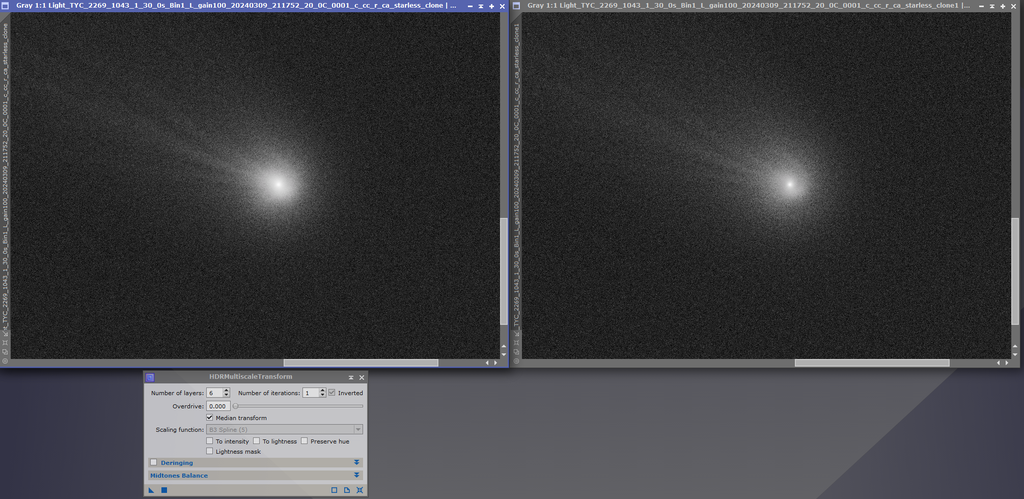 I think the important note is the word should, which doesn't necessarily mean that it does. So the tool might work differently on a comet than on a galaxy because of the different structure of the actual object and based on how aggressively it is being applied. I haven't got access to Adam Block's tutorials, but he may dabble into this in his videos for all I know. It would be surprising if he didn't. I tried finding some free content from him as I know he is big on comets, but I'm struggling to find much on this process from anyone. Mostly I see this tool being used without the median transform option activated though, like in Vincent's tutorial. Several of them are also AB users, but they may be more active on the PI forum and their FB groups.
|
You cannot like this item. Reason: "ANONYMOUS".
You cannot remove your like from this item.
Editing a post is only allowed within 24 hours after creating it.
You cannot Like this post because the topic is closed.
Copy the URL below to share a direct link to this post.
This post cannot be edited using the classic forums editor.
To edit this post, please enable the "New forums experience" in your settings.
I just posted on PixInsight's forums: Median Transform on Comets: Artifacts or Data?Let's see if we can get a definitive answer!
|
You cannot like this item. Reason: "ANONYMOUS".
You cannot remove your like from this item.
Editing a post is only allowed within 24 hours after creating it.
You cannot Like this post because the topic is closed.
Copy the URL below to share a direct link to this post.
This post cannot be edited using the classic forums editor.
To edit this post, please enable the "New forums experience" in your settings.
All right, folks! We've got an answer from Juan, who tells us that the Median Transform filter on the saturated core causes the spikes. This also happens on the other images, although there's still something interesting going on algorithm-wise that could be analyzed. On my side, I did a simple experiment to confirm these are indeed artifacts. I created a fake comet image in Photoshop, adding noise, blur, and a saturated core. Applying a Median Transform filter on it with PixInsight reveals the same kind of structures: 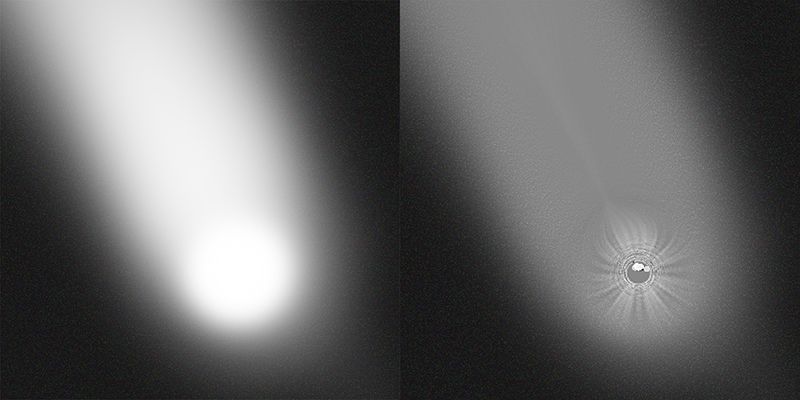 I think we can confidently call it a day. Thank you so much to everybody who participated in the thread! As always, I learned many things. Clear skies!
|
You cannot like this item. Reason: "ANONYMOUS".
You cannot remove your like from this item.
Editing a post is only allowed within 24 hours after creating it.
You cannot Like this post because the topic is closed.
Copy the URL below to share a direct link to this post.
This post cannot be edited using the classic forums editor.
To edit this post, please enable the "New forums experience" in your settings.
Excellent way of testing it! I was just reading up on the replies while testing the LarsonSekanina script, but I had a really hard time getting anything like those spikes. There was just nothing there, except for some ringing around the nucleus. So while I can't attest to how Dan got them up through that particular script I'll leave it at that. Even though the entire core isn't saturated, there's a high chance that some of it is (just a smaller part of it) being the reason for artifacts in images that appear properly exposed.
Another thing which we didn't discuss is how those structures (if real) would be able to possibly point against the turbulence/solar winds. Especially if we judge the size of them, they would be massive in both size and force.
Happy comet hunting!
|
You cannot like this item. Reason: "ANONYMOUS".
You cannot remove your like from this item.
Editing a post is only allowed within 24 hours after creating it.
You cannot Like this post because the topic is closed.
Copy the URL below to share a direct link to this post.
This post cannot be edited using the classic forums editor.
To edit this post, please enable the "New forums experience" in your settings.









